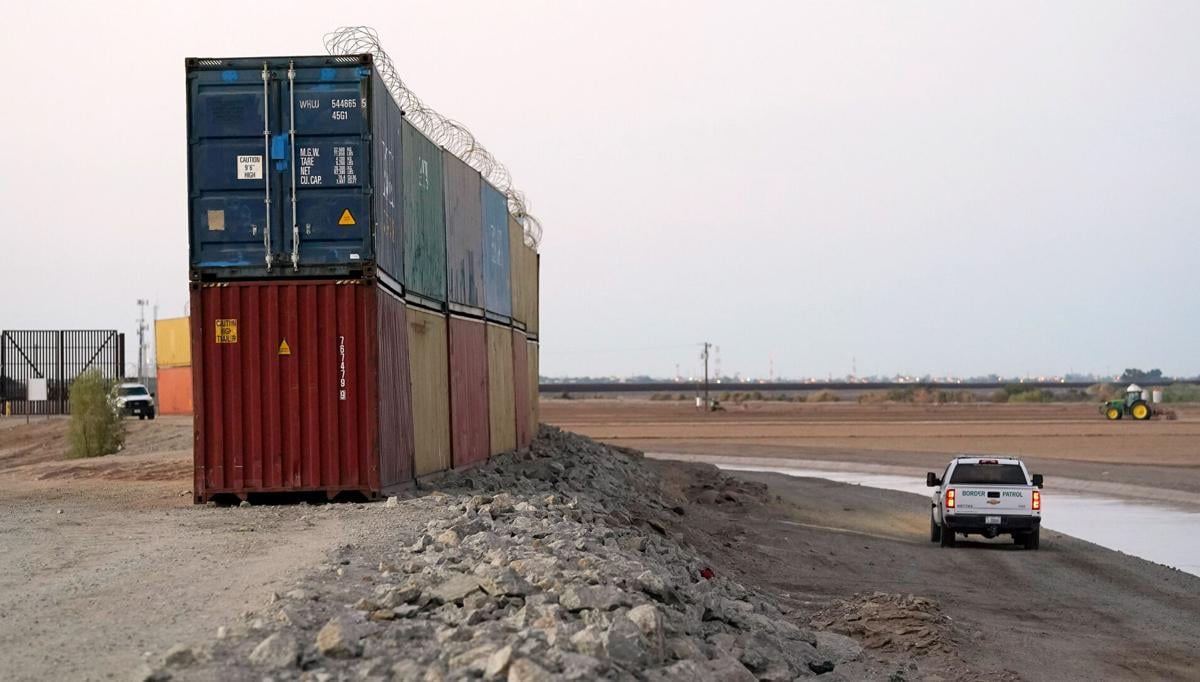The state of Arizona continues to stack shipping containers on federal land as a border security measure, now in protected public lands.
The state already stacked 130 shipping containers on federal land near the U.S.-Mexico border in Yuma in August.
In the last few days, the state moved a number of shipping containers to a staging area near the border in the western-most end of Cochise County, says C.J. Karamargin, a spokesman for Gov. Doug Ducey.
Karamargin said Friday that he believes the containers are in a staging area on Forest Service land near a 20-mile gap between sections of the border wall.
“Gov. Ducey said in his State of the State that Arizona will use border barriers where appropriate, so none of this should come as a surprise,” Karamargin said. “What we did in Yuma is additional confirmation of what is happening. Governor Ducey is true to his word. … The gaps in the border barrier have proven to be weak points in border security and this is what we are attempting to address.”
Some public officials, like Yuma Mayor Douglas Nicholls, have praised the governor’s border barriers. And border officials have said a barrier in Yuma helps because it funnels migrants to where Border Patrol can more easily process them.
The barrier in Yuma doesn’t actually stop migrants from coming into the country. That’s because the the southern side the container barrier is on U.S. soil, meaning Border Patrol has to process people waiting there. And more people have been crossing nearby on the Cocopah Reservation where there is no wall.
In the three weeks after Arizona filled the gaps, the number of migrants Border Patrol apprehended only increased, according to data from Yuma Chief Patrol Agent Chris Clem.
Karamargin confirmed that the state is now looking at putting shipping containers in the general area of the Yaqui Spring access road, which is just west of the southern terminus of the Arizona Trail and the Coronado National Memorial.
The area they’re looking at is about a 20-mile gap in the western-most part of Cochise County where there is no existing border barrier, he said. That part of the county on the border is in the Coronado National Forest. The state doesn’t know yet how much of that gap they plan to fill.
The shipping containers being moved to a staging area in Cochise County came from an area near Whetstone, in Southern Arizona. On Oct. 6, several dozen shipping containers were stacked directly off of Arizona 90, near the intersection of Arizona 82, according to the Arizona Republic.
As far as following any environmental regulations, Karamargin says the Arizona Department of Emergency and Military Affairs has attempted to work with the federal government through the Forest Service, the Bureau of Land Management and U.S. Customs and Border Protection.
“Unfortunately, our federal partners have either been non-responsive or unhelpful,” he said.
Coronado Forest Supervisor Kerwin Dewberry said Friday he was unable to answer questions about the shipping crates.
Although the state does not have permission from the federal government to put such a structure on federal land, the governor’s office hasn’t heard from the federal government on this matter, Karamargin says.
The state has reached out to various federal agencies with jurisdiction on the border, “but they’ve either been unresponsive or unhelpful,” he said.
The Star has reached out to numerous federal agencies about the matter to no avail.
In August, when the Star asked the Bureau of Reclamation, which manages the land in Yuma where the state put shipping containers, if they were going to take any action, the agency sent a statement saying their priority is to ensure the integrity of its water management infrastructure and to fulfill their mission to deliver water from the Colorado River to communities in the West and honor the U.S.’s treaty obligations.
When asked the same question in September after the Cocopah Tribe, adjacent to the barrier in Yuma, raised concerns about the shipping containers, the Bureau of Reclamation sent an almost identical response.
The Department of Homeland Security and the White House also have not responded.
The cost of the latest border barrier the state is set to erect has yet to be calculated.
What the governor’s office is calling the Yuma Border Barrier Mission cost about $10 million, according to Karamargin. It included 130 shipping containers double-stacked, filling 3,820 feet near the border in Yuma. It completed installation Aug. 23.





